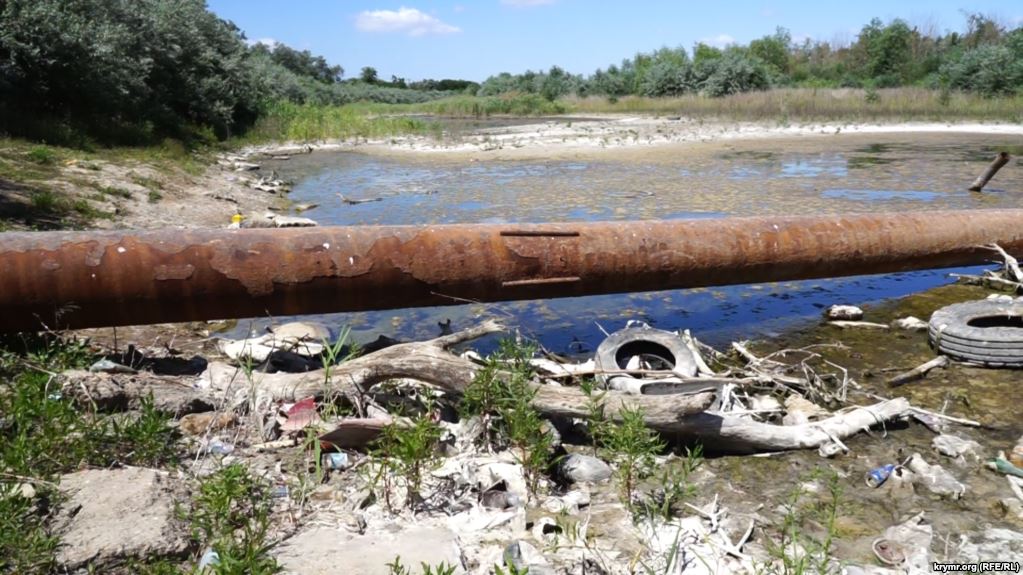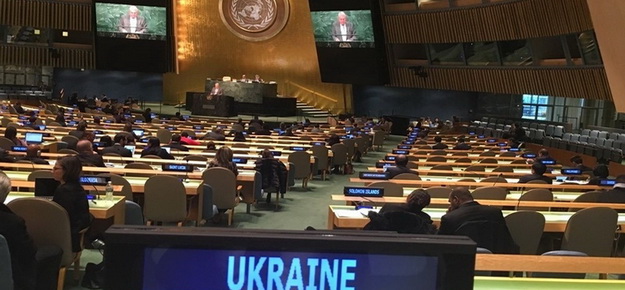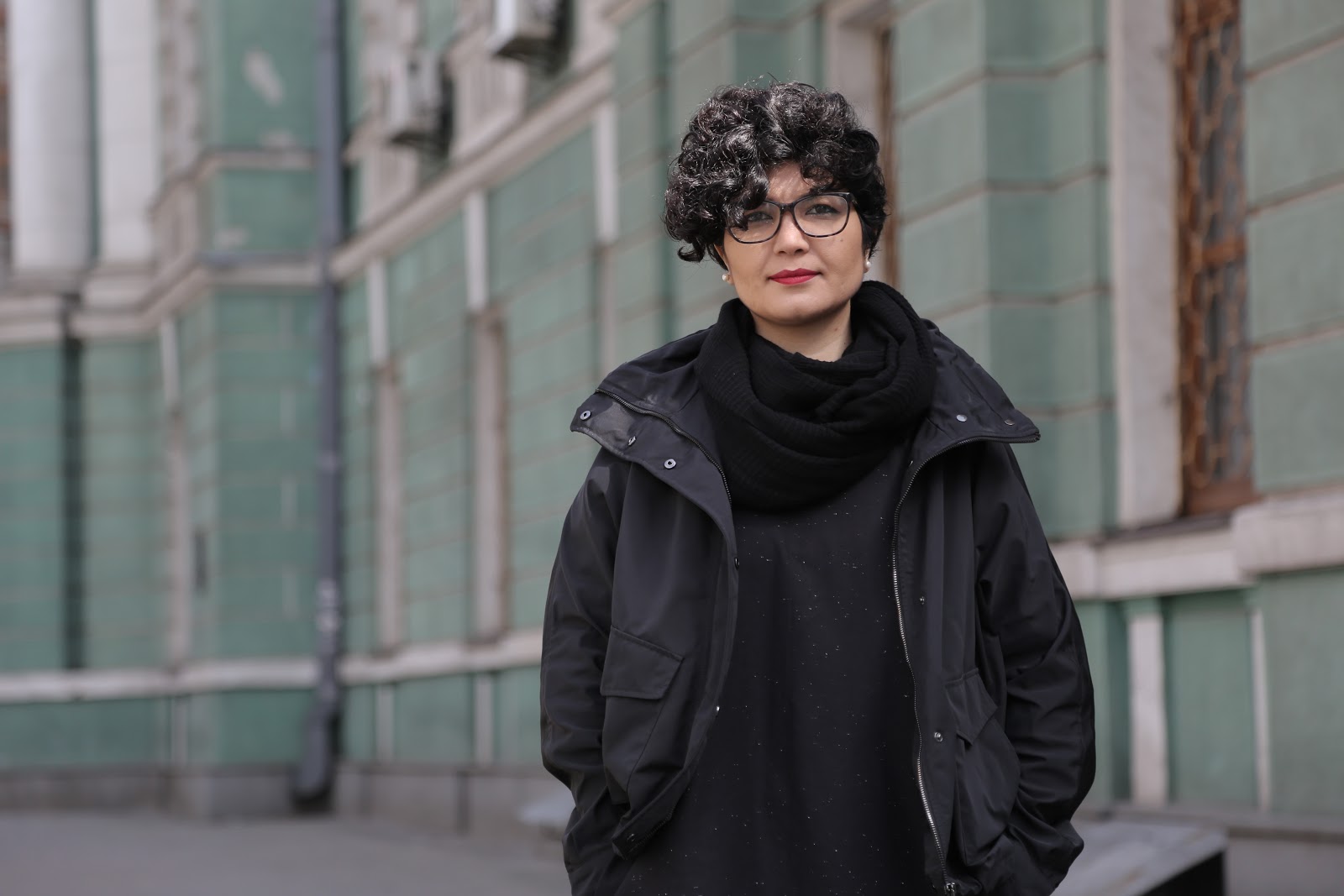While Russia is boasting about the opening of a bridge connecting Crimea with Russia through the Azov Sea, news no less important are being overlooked. The occupied peninsula is suffering from an extreme drought. At the beginning of summer 2018, the self-proclaimed authorities of Crimea announced a state of emergency in several regions. And the dry weather is only a small part of the problem. Since the beginning of the occupation, Crimea is cut off from water coming from mainland Ukraine. This water is crucial for the arid peninsula. Experts assume that the catastrophic water situation could spur another Russian act of aggression against Ukraine.
Even the occupation government was compelled to acknowledge the problem. The Russian Ministry on the Agriculture of Crimea informed that in 2018, the farmers of the peninsula will harvest twice fewer crops than the year before – just 800 tons – due to dry weather.
Additionally, the so-called Ministry of Crimea will have to prepare documents for the Russian government to compensate Crimean agrarians for the damage. In the end of May, the self-proclaimed Head of Crimea Sergey Aksyonov stated that this damage was estimated at more than Rub 1 bn ($16 mn).
Crimean environmental expert Marharyta Lytvynenko points out that neither a personnel reshuffle nor additional finances from the Russian budget will help to overcome the drought on the peninsula:
“Now even the specialists who during 2014-2015 were saying that the peninsula can do without water and become a blossoming health resort have officially recognized that water is needed.”
To a great extent, the Crimean peninsula depends on water from the Dnipro river which was since the 1960s brought from mainland Ukraine through the North Crimean Canal. After Russia occupied Crimea in 2014, Ukraine dammed the water artery. Despite loud promises, Russia could not find an alternative.
The North Crimean Canal

The canal was built in the 1960s to provide water from the river Dnipro, located in mainland Ukraine, to northern Crimea. Then, the region was sparsely populated due to the aridity of the territory. Later, the construction of the channel moved westward to the Kerch peninsula. Water reservoirs for the nearby villages and towns were built around the channel.
The arid steppe and salinated soil were transformed. The area of irrigated by the channel lands exceeded the areas irrigated by the local sources by 3 times.
There were plans to extend the channel to central Crimea and the resort-saturated southern coast. But in the 1980s, the project’s funding was reduced significantly and these plans were not implemented.
In the best years, the canal brought about 3 bn cubic meters of water to Crimea annually (the volume of all local sources is only 1 bn cubic meters on average).
Problems of the Canal
The canal solved many problems of the peninsula. However, it caused others:
- The groundwater level in the irrigated areas was raised, so the settlements located in the area of the main channel and its branches were under the threat of flooding.
- The soil became salinized, and the existing water bodies became polluted from fertilizers and pesticides which came with the agricultural development of the territory.
At first, the course of the canal was smeared with clay. Later, it was lined with concrete plates; however, water loss was common.
“And then came the collapse of the Soviet Union. Even if you isolate the channel with concrete, you need to monitor it. During the 23 years of Ukraine’s independence this was done, to put it mildly, irregularly. In some areas the isolation was broken, and a very strong infiltration of water into the surrounding grounds took place. As there was a lot of water, no one paid proper attention to the losses. As a result, the soil horizons were saturated with moisture. When moisture evaporates from the soil, the minerals that were dissolved in the water remain. If you continue to supply water from above, these salts will be washed down and settle at a lower horizon. And while the channel existed, it was this way, the soils were washed, the salt went to the lower horizons, everything was fine,”
says Anton Novikov, the Senior Lecturer of the Department of Eco-Geology and Nature Management of the Moscow Lomonosov State University Lomonosov in Sevastopol.
Nowadays, experts point to problems created by the canal’s construction. It allowed for activities which were previously not possible in the area, like fish farming, cultivation of gardens and vineyards. But another new activity was the cultivation of rice – which is nonsense for Crimea’s arid climate.
During several years preceding the occupation, the water volume coming to Crimea through the canal dropped significantly, about three times. It was possible to fill only 8 out of 23 water reservoirs. All the reservoirs were used for supplying drinking water. Their water levels did not depend on the weather. The only thing needed was to have enough money to pay for electricity required to power the pumping stations.
As of 2012, water from the Dnipro supplied 85% of Crimea’s consumption. “Thanks to the channel, Crimea will never be left without water,” wrote the newspaper of Crimea’s Verkhovna Rada, its local parliament, in 2012.
Occupation
In April 2014, after the beginning of the Russian occupation of the peninsula, Ukraine blocked the canal.
A temporary dam in the adjacent Kherson Oblast was built, blocking the water from entering occupied Crimea. A metering device was envisioned in case if the sides came to an agreement on the price and conditions of supplying fresh water to Crimea.
In 2015, the Ukrainian government allocated money for a permanent dam on the canal. Nowadays, the new dam blocks water from the Dnipro from flowing to Crimea. The channel is filled with water which is used for the irrigation system of the Kherson Oblast.
Oleksandr Romanenko, Head of Management of the canal, says that the dam is only one of the stages of the arrangement of a new irrigation system for the Kherson Oblast. With its help, the Kherson Oblast will increase its irrigated area, and, subsequently, harvests.
Meanwhile, a part of the North Crimean Canal on the northern suburb of Armiansk on the occupied peninsula had become overgrown with reeds, shrubs and is turning into a garbage dump.
Water shortage as a precursor for provocations

Ukrainian experts do not exclude the possibility that Russia will try to take control over the Canal by force. After Russia redeployed five of its naval vessels to the Azov sea in May 2017, military analyst Denys Popovych suggested there were two reasons for these maneuvers:
“Russia is building up its military presence in the Azov Sea and is blackmailing Ukraine for it to: a) resume water supplying to Crimea, b) make concessions on the Donbas conflict. Also the gas questions might be the reason.”
Recently, Ukraine won a case against Russia in the Stockholm arbitration court. According to it, Russia’s state gas monopolist Gazprom should compensate Ukraine’s state-owned Naftogaz $2.6 bn. In accordance with the decision, Ukraine has started seizing Gazprom assets on its own territory; recently, Naftogaz reported that a British court froze Gazprom assets on its territory.
The expert refutes Russian claims that it sent warships to the Azov Sea for defense reasons – allegedly to protect the newly-built Crimean Bridge from possible attacks:
“I can’t imagine a situation when Ukraine would either try to get Crimea back by force or attack the Crimean Bridge. Russia would consider any attack on the bridge as aggression from Ukraine and this can cause an escalation, in particular in the Azov direction and in Donbas.”
Permanent Representative of the President of Ukraine in the Crimean Republic Borys Babyn believes there are three options of how Russia could take control over the Canal. The least likely one is if someone from the Ukrainian side would provide it.
“Another one is purely legal. There are Russian lawyers and ‘affiliated’ people running around in Ukraine to receive a decision of Ukrainian courts on the North Crimean Canal.”
In Babyn’s opinion, if this scenario won’t work, Russia can switch to option #3, the most radical one – to take over the Ukrainian-controlled object by force or hybrid actions.
The President’s representative pointed out a dangerous trend which could be a warning sign: the loss of signs of Ukrainian state control in some locations adjacent to Crimea – for example, in the Henichesk region, where, according to him, numerous criminal-organized gangs arranging anti-Ukrainian protests have been active lately.
He noted that the situation so far poses a security threat, but not yet a military one yet.
“On the local level, it is hard for police and the executive branch to oppose it. I am confident that our security services and the central apparatus are taking action. However, the Ukrainian people should know about this disaster.”
The political observer for RFE/RL’s Crimean desk Serhiy Stelmakh (the name is changed for the security reasons) highlights that the lack of water on the peninsula spoils Moscow’s image by demonstrating that it can’t fulfill the basic needs of the local population:
“It is not that the Russian or Crimean government are really worried because of the basic needs of Crimeans. This state of affairs impairs the imperial pride of the Moscow elite, that some Ukraine cut off the North Crimean Canal, putting the ‘Russian’ peninsula on the brink of survival. The Russian top leadership, the backbone of which is made up of security services and military, will search for any opportunity to renew the water supply.”
The observer says that another sign of a possible escalation is seen in Vladimir Putin’s changing rhetoric:
“His public speeches again include statements which have not been used since 2014-2015. Then Moscow felt as a top dog and tried to impose its rules on Ukrainians. Now, Putin again started to talk about the ‘federalization’ of Ukraine and a refusal from NATO integration which allegedly can help to solve ‘Ukrainian question’.”
Paul Goble, analyst of the Jamestown Foundation, also believes Russia can attack mainland Ukraine using its naval forces after the FIFA World Cup ends in Russia:
“In my opinion, the redeployment of forces is directly related to the Football World Cup. Like the time when Putin intervened in Ukraine after the Olympic Games in Sochi, it very probable he will make steps against Ukraine or somebody else after the Cup. I do not expect to see actions in the next two weeks, but think that the Russian government is creating new opportunities to threaten Ukraine.”
Russia’s responsibility
According to the Geneva Convention, the occupying power carries responsibility for the situation in the territory it occupied.
“It clearly defines that the international community holds the occupying country fully responsible for providing the basic necessities to the population of the occupied territory. So this is a problem for Russia,”
says Andriy Senchenko, the head of the NGO Syla Prava [“The Power of Law”].
Experts estimate that Crimea has enough water from its own sources, without the Dnipro water, only for 1 million people.
“We estimated the water supply of different regions of Ukraine. Crimea has 380 cubic meters per person per year, whereas 1,700 cubic meters per year is considered the norm per person according to the UN classification. Therefore, we classified Crimea as a region with a catastrophically low water supply,”
said Mykhailo Romashchenko, the head of Ukraine‘s Institute of Water Problems and Amelioration.
In 2017, the population of Crimea was 2,340,92, according to local statistics. But there is no data on the number of Russian soldiers, the members of their families and the Russian authorities sent on business trips to Crimea, as well as Russian Ministry of Internal Affairs and the Federal Security Service.
Volodymyr Yelchenko, the Permanent Representative of Ukraine to the United Nations, believes that the situation in the occupied peninsula would be better if Russia stopped spending scarce resources on the growing needs of the military infrastructure and military personnel there.
He is also confident that the water shortage can be solved by the de-occupation of Crimea and that Russia uses the problem it created itself as another instrument of propaganda.
Read also:
- Crimea’s economy. When Russia’s words and figures don’t meet
- Occupied Crimea is running out of water
- Crimea’s water troubles
- How much will Crimea cost Russians?
- Three years later, Crimea abandoned by both Ukraine and Russia




